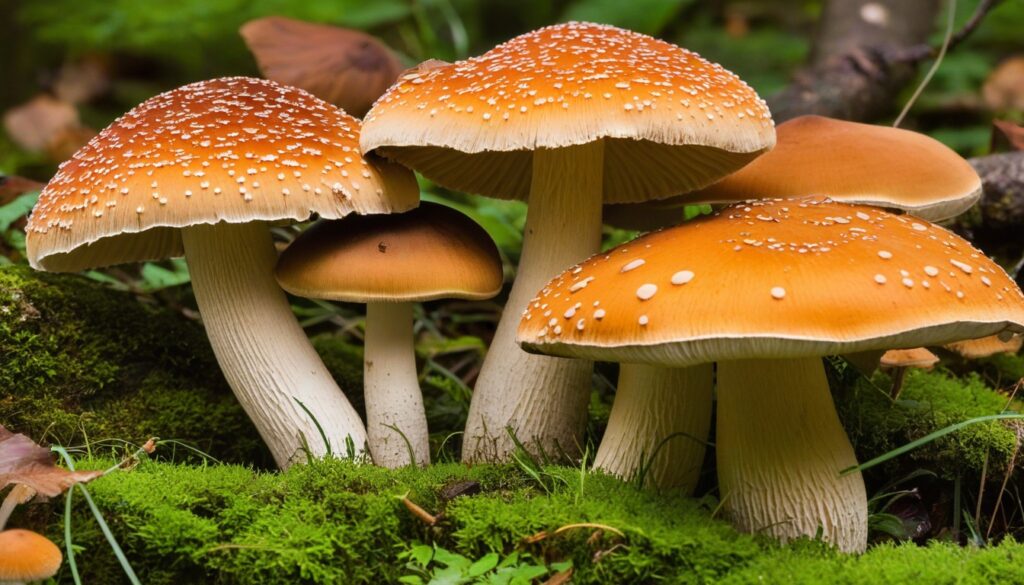Welcome to the ultimate guide on foraging for edible mushrooms in Hawaii. For both seasoned foragers and curious beginners, this article will provide you with valuable insights and tips for safely discovering the best spots for edible mushrooms throughout the beautiful islands. With an abundance of mushroom species found in Hawaii’s unique climate and terrain, we are excited to help you uncover the many culinary delights these fungi have to offer.
Key Takeaways:
- Learn about the wide variety of edible mushroom species found in Hawaii’s forests and grasslands
- Discover popular mushroom species and their unique characteristics, preferred habitats, and tips for identification in the wild
- Find out where to forage for mushrooms in Hawaii’s various regions with our guide to the best spots
- Stay safe while foraging with our tips on proper identification techniques, potential hazards, and responsible harvesting practices
- Enjoy delicious mushroom dishes by learning cooking techniques, recipes, and preservation methods
The Diversity of Edible Mushrooms in Hawaii
Hawaii’s unique climate, and geography provides a diverse range of edible mushroom species that can be foraged for culinary delights. These edible mushrooms contribute significantly to the island’s biocultural diversity while adding a range of exotic flavors to any dish. The following are some of the popular varieties you can expect to encounter in Hawaii’s forests and grasslands.
|
Species |
Description |
Preferred Habitat |
|---|---|---|
|
Volvariella volvacea |
An edible white mushroom with a soft texture and mild flavor. |
Commonly found in waste materials like banana leaves or sawdust. |
|
Pleurotus ostreatus |
A delicious oyster-shaped mushroom with a meaty texture and delicate flavor. |
Wood-decaying species that grow on decaying trees or stumps. |
|
Grifola frondosa |
A tasty and meaty mushroom commonly known as Hen-of-the-woods. |
Grows on the base of trees, logs, or stumps. |
|
Ganoderma lucidum |
A medicinal and flavorful mushroom commonly referred to as Reishi. |
Grows on hardwood trees and stumps. |
|
Lentinus sajor-caju |
An edible mushroom with a crunchy texture and mild flavor. |
Grows on decaying or dead wood. |
These are just a few examples of the many varieties of edible mushrooms that can be found in Hawaii. As always, ensure proper identification before consuming any mushroom found in the wild. Let’s move onto the next section to explore some of Hawaii’s most popular edible mushrooms.
Popular Edible Mushroom Species in Hawaii
Hawaii boasts a diverse selection of edible mushroom species, each with their unique characteristics and habitats. In this section, we’ll explore some of the most popular varieties found throughout the islands, providing you with helpful tips for identifying them in the wild.
Matsutake Mushroom
This prized mushroom has a distinct aroma and flavor, making it a favorite in Japanese cuisine. They are found in the high elevation forests of Hawaii, typically under pine trees. The Matsutake’s cap is a reddish-brown to tan, while the stem is white and fibrous, with a ring near the top.
Lobster Mushroom
The Lobster mushroom is easy to spot with its bright orange or reddish exterior. Its firm texture makes it perfect for soups, stews, and sautés. This species often grows on debris or logs in damp forests, but it can also be found in grassy areas.
Chanterelle Mushroom
The Chanterelle mushroom is known for its delicate, fruity flavor and meaty texture. It comes in a range of colors, from yellow to orange to brown. Chanterelles can be found in both deciduous and coniferous forests, typically growing near the base of trees.
|
Mushroom |
Preferred Habitat |
Identification Tips |
|---|---|---|
|
Matsutake |
High elevation pine forests |
Reddish-brown to tan cap, white stem with a ring near the top |
|
Lobster |
Damp forests or grassy areas |
Bright orange or reddish exterior |
|
Chanterelle |
Deciduous or coniferous forests, near the base of trees |
Delicate fruity smell, meaty texture, yellow-orange to brown cap |
These are just a few examples of the many edible mushroom species found in Hawaii. Remember to always correctly identify the mushrooms before consuming them and ensure that they are thoroughly cooked.
Best Spots for Foraging Edible Mushrooms in Hawaii
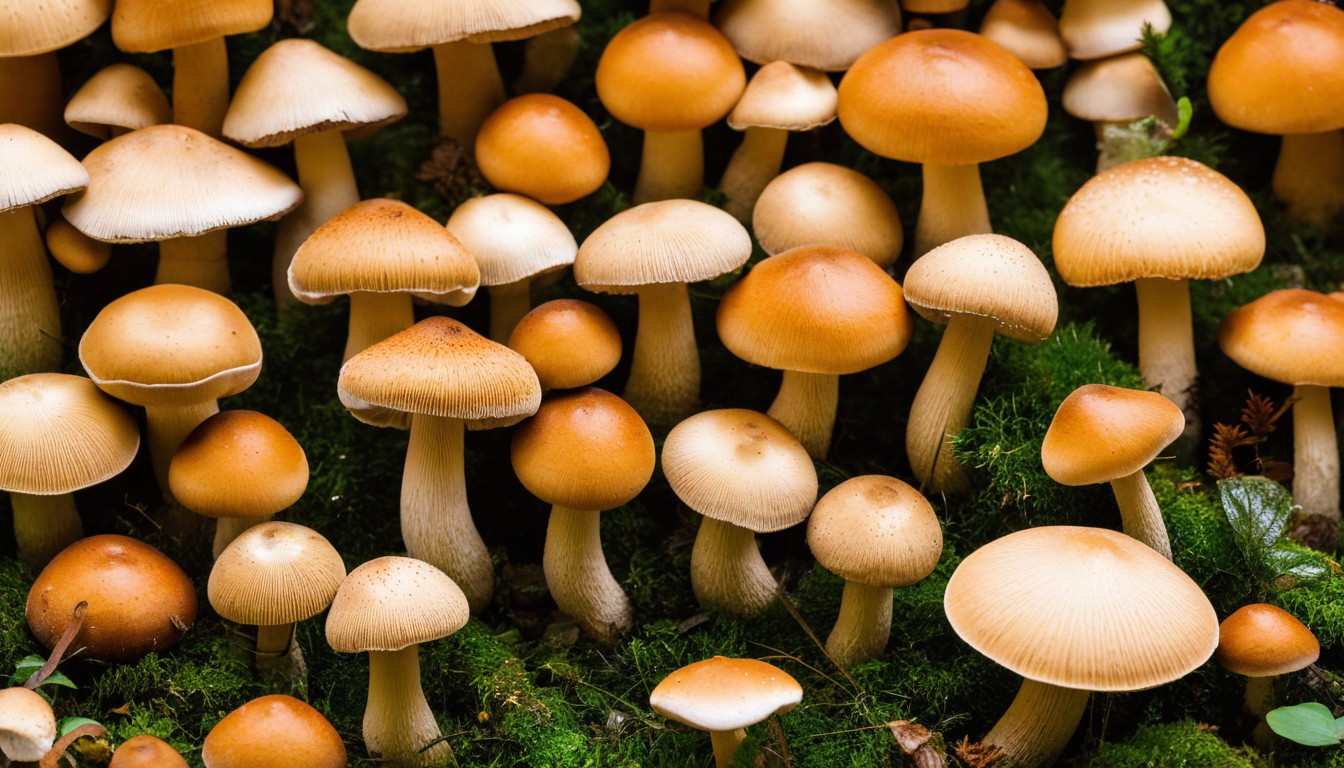
Are you ready to venture into Hawaii’s lush forests and grasslands to forage for edible mushrooms? Here are some of the best spots to discover Hawaii’s bountiful mushroom populations:
|
Island |
Region |
Best Spots |
|---|---|---|
|
Kauai |
North Shore |
Nāpali Coast State Wilderness Park, Limahuli Garden and Preserve |
|
East Side |
Kapaa, Keahua Arboretum, Opaekaa Falls | |
|
Big Island |
North Hilo |
Akaka Falls State Park, Laupahoehoe Point Beach Park |
|
Hawai’i Volcanoes National Park |
Kīlauea crater, Mauna Loa lookout, Devastation Trail | |
|
Hilo |
University of Hawaii at Hilo, Wailuku River State Park, Panaewa Rainforest Zoo | |
|
Maui |
Upcountry |
Pu‘u Kukui Watershed Preserve, Polipoli Spring State Recreation Area |
|
West Maui |
Papalaua Wayside Park, Lahaina Pali Trail | |
|
Oahu |
Windward Side |
Maunawili Trail, Aiea Loop Trail, Ho’omaluhia Botanical Garden |
If you’re planning to forage in Hawaii, be sure to obtain proper permits, respect private property, and follow responsible harvesting practices. Happy foraging!
Safety Tips for Foraging Edible Mushrooms in Hawaii
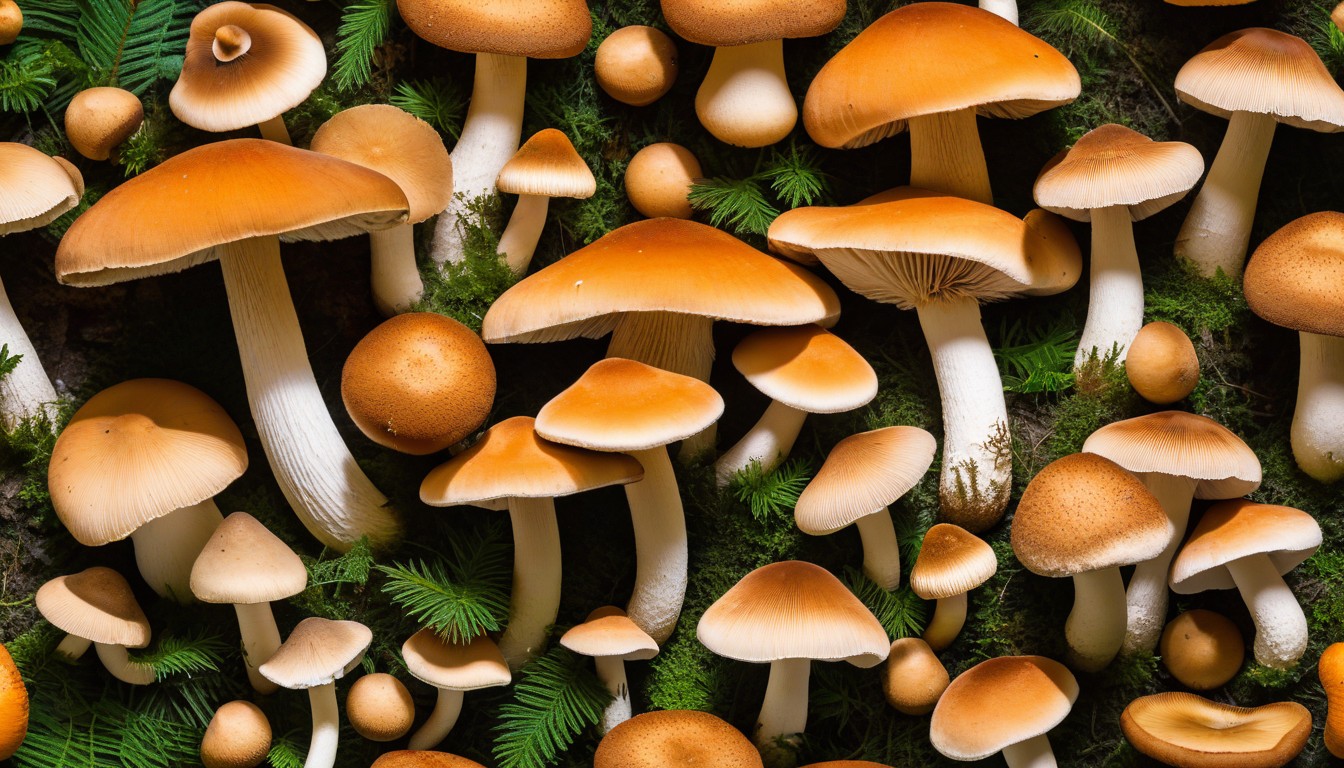
Foraging for edible mushrooms in Hawaii can be an exciting adventure, but it’s important to prioritize safety. Whether you are a seasoned forager or a beginner, taking proper precautions can help ensure a successful and enjoyable experience. Here are some essential safety tips to keep in mind:
Proper identification techniques
Before consuming any mushroom, it’s crucial to correctly identify the species. Using a reliable field guide or consulting with an expert can help prevent any potential mishaps. Always be wary of similar-looking toxic mushrooms that can grow in the same habitat.
Potential hazards
While foraging, be aware of potential hazards such as uneven terrain, slippery slopes, and wildlife that may also be foraging in the area. Wear appropriate footwear, protective clothing, and bring a first-aid kit, just in case.
Responsible harvesting practices
Harvest only what you need, leaving plenty of mushrooms untouched for future foragers and to maintain the ecosystem balance. Cutting mushrooms at the base instead of pulling them out can help preserve the mycelium network in the soil, allowing for future growth.
|
Potentially Dangerous Mushrooms in Hawaii: |
Symptoms of Toxicity: |
|---|---|
|
Amanita phalloides (Death Cap) |
Abdominal pain, vomiting, and diarrhea can occur within 6 to 24 hours of ingestion, followed by liver and kidney failure. |
|
Conocybe filaris (Filibuster Conecap) |
Abdominal pain, diarrhea, and nausea can occur within 1 to 3 hours of ingestion, potentially leading to liver failure. |
|
Galerina marginata (Autumn Galerina) |
Nausea, vomiting, and abdominal pain may occur within 6 to 8 hours of ingestion, progressing to liver and kidney failure. |
By following these safety tips, you can enjoy a fulfilling and secure mushroom foraging adventure in Hawaii. Remember to always prioritize proper identification, awareness of potential hazards, and responsible harvesting practices.
Seasonal Changes and Mushroom Foraging in Hawaii
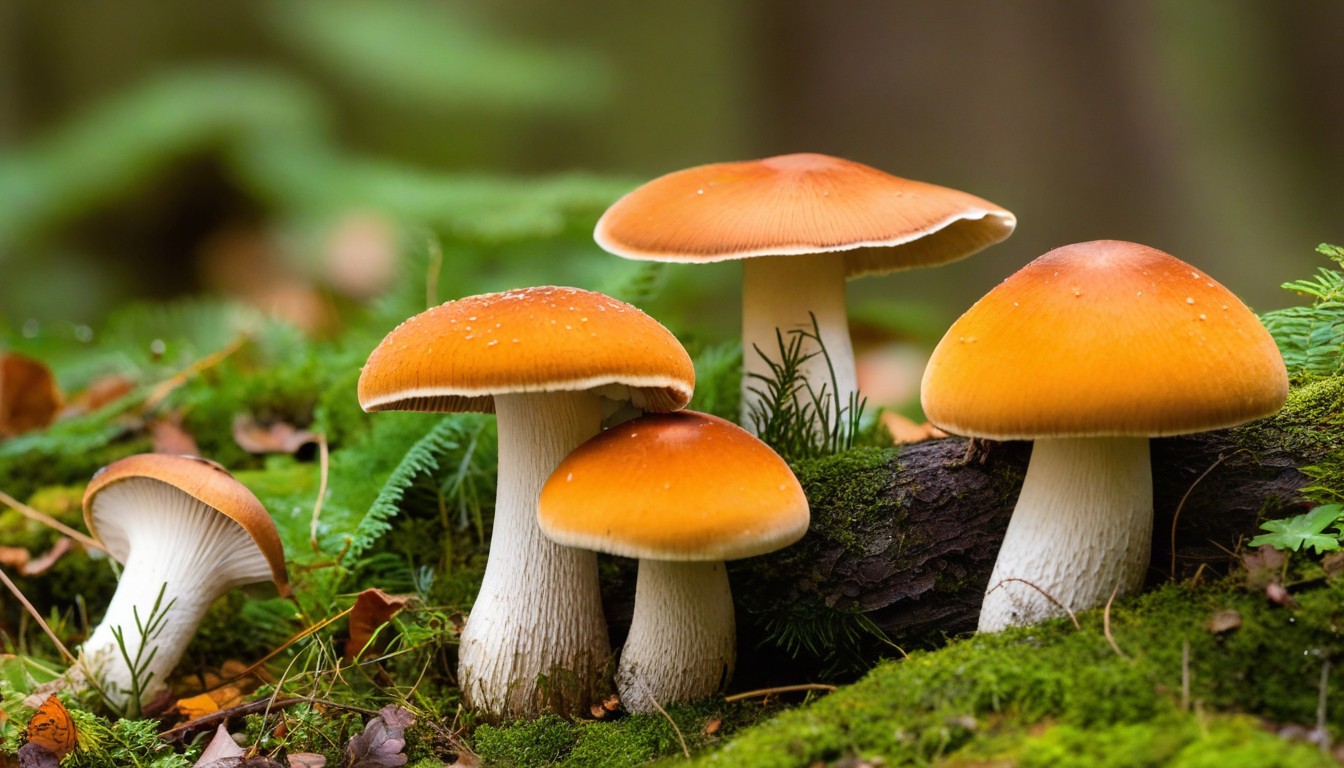
Hawaii’s tropical climate and unique geography create ideal conditions for the growth of diverse edible mushroom species throughout the year. However, understanding seasonal changes and their impact on mushroom growth is crucial for successful foraging. Let’s explore how Hawaii’s climate affects mushroom seasons.
Winter
The wetter winter months, from November to March, are the prime season for wild mushroom hunting in Hawaii. This period marks the peak of several key mushroom varieties, including the fragrant and flavorful Matsutake mushroom, which is highly prized in Hawaii’s culinary culture. Heavy rains and cooler temperatures create a moist environment that boosts mushroom growth, making it easier to spot mushrooms among the vegetation.
Spring
Spring in Hawaii, from April to May, marks the transition from the wetter winter months to the drier season. During this time, the moderate temperatures and sunny weather create the perfect environment for oyster mushrooms to flourish. These delicate, fuzzy mushrooms thrive on decaying plant matter and can be easily spotted on trees, logs, and stumps.
Summer
The months from June to August mark Hawaii’s dry season, characterized by less rainfall and higher temperatures. While mushroom foraging during this period can be challenging, it is still possible to find some tasty treats. The drier climate can cause some mushroom species to go dormant, but others, such as chanterelles, are at their peak during this season. Look for these bright yellow-orange mushrooms among the moss and fallen leaves near streams and rivers.
Fall
September and October in Hawaii bring a new wave of mushrooms, signaling the start of the rainy season. During this time, mushrooms such as the coral mushroom emerge from the forest floor, while other species, like the black chanterelle, begin to taper off. Look for coral mushrooms in wet, mossy areas, and keep an eye out for the iconic Lobster mushroom, which is a fungus that parasitizes other mushrooms and takes on a striking orange color.
Mushroom Seasonal Chart Table
|
Mushroom Name |
Season |
Location |
|---|---|---|
|
Matsutake |
Winter |
Forests across Hawaii |
|
Oyster |
Spring |
Growing on trees and logs |
|
Chanterelles |
Summer |
Near streams and rivers, mossy areas |
|
Coral Mushroom |
Fall |
Wet, mossy areas |
|
Lobster Mushroom |
Fall |
On decaying mushrooms |
Use this table as a guide to identify the most popular mushroom types during each season and their preferred locations.
By understanding seasonal changes and how they influence the growth of various mushroom species, you can increase your chances of a successful foraging trip in Hawaii. Remember to always practice caution and proper identification techniques when harvesting wild mushrooms. Happy foraging!
Cooking and Preserving Edible Mushrooms from Hawaii
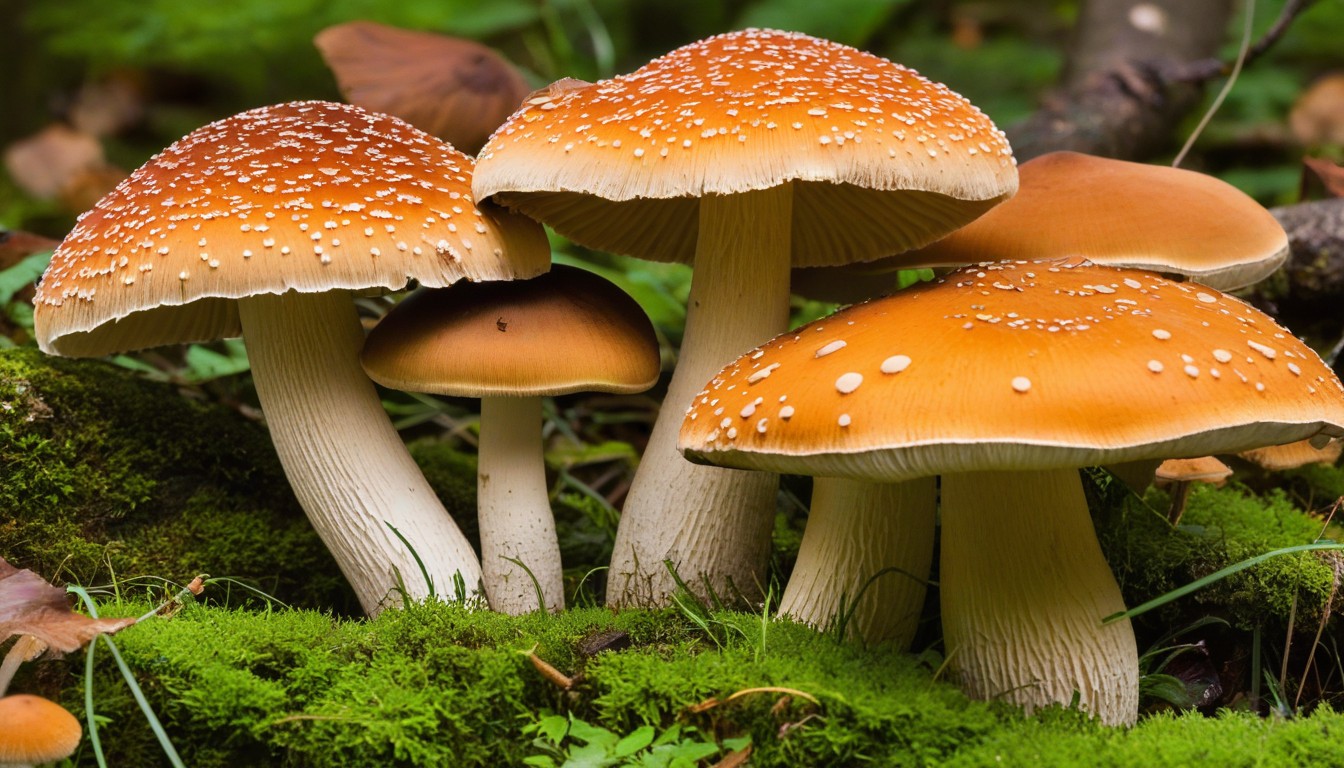
Now that you’ve foraged some delicious edible mushrooms from Hawaii’s forests and grasslands, it’s time to showcase their unique flavors and textures in your meals.
Cooking Techniques
The delicate and earthy flavor of Hawaii’s mushroom species complements a variety of dishes. Here are some cooking techniques to make the most of your mushroom finds:
- Sautéing: Add sliced mushrooms to a hot, oiled pan and cook until browned and tender.
- Roasting: Roast whole or chunked mushrooms with olive oil, salt, and pepper in the oven until crispy and caramelized.
- Grilling: Skewer mushrooms and grill over medium-high heat until charred and tender.
By adapting cooking techniques to different mushroom species, you can unlock their full potential and create culinary masterpieces.
Preserving Mushrooms
While the mushroom season in Hawaii is relatively short, you can enjoy its flavors year-round by preserving your finds. Here are some methods for preserving mushrooms:
- Drying: Slice mushrooms and place them on a baking sheet in a warm, dry location until they are crispy.
- Pickling: Boil mushrooms in a vinegar and water mixture with spices and herbs, then store in a jar in the fridge.
- Freezing: Blanch mushrooms in boiling water for a few minutes, then shock in an ice bath, dry, and freeze in airtight bags.
Preserving mushrooms not only extends their lifespan for future use, but also enhances their flavor and texture in unique ways.
“Mushrooms are incredibly versatile ingredients. Once you learn different ways to cook and preserve them, you can include them in almost any dish, from simple pastas to complex stews” – Chef Michael Smith
Mushroom Foraging Ethics and Sustainability in Hawaii
Foraging for mushrooms in Hawaii can be an enriching and exciting experience. However, as conscientious foragers, it is essential to consider the ethical implications of our actions. To preserve the long-term health and diversity of Hawaii’s mushroom populations, we need to prioritize sustainability and responsible harvesting practices.
One crucial aspect of mushroom foraging ethics is avoiding overharvesting. It’s important to remember that mushrooms play a vital role in the ecosystem, serving as decomposers and essential components of the food web. Therefore, harvesting too many mushrooms from one area can have detrimental effects on the environment.
Another vital consideration for ethical mushroom foraging is leaving no trace. This means taking care not to damage the surrounding vegetation or wildlife when foraging. It’s also crucial to remove any human-made waste and debris from the area.
|
Sustainability Tips for Mushroom Foraging in Hawaii |
|---|
|
Only harvest mushrooms you can positively identify as edible. |
|
Harvest only the amount of mushrooms you need and leave enough for others and the ecosystem. |
|
Don’t pick all mushrooms at once and consider spacing out your harvests to allow for regrowth. |
|
Respect the area by leaving no trace and minimizing your impact. |
Responsible mushroom foraging also includes being aware of local regulations and laws regarding foraging. Some areas may have restrictions on foraging or require permits for collection. Be sure to research these regulations before heading out on a mushroom foraging trip.
By following sustainable practices and ethical considerations, we can enjoy the delicious flavors of Hawaii’s edible mushrooms while preserving the environment for future generations of foragers.
Conclusion
Hawaii is a treasure trove of edible mushrooms, and with our guide, you can safely explore the islands and uncover their culinary delights. Remember to follow our safety tips and foraging ethics, and savor the unique flavors and textures of the local mushroom species. Whether you’re an experienced forager or a curious beginner, Hawaii’s diverse range of edible mushrooms awaits. So go forth, and happy foraging!
FAQ
What are edible mushrooms?
Edible mushrooms are fungi that are safe for human consumption and can be used in cooking and culinary preparations.
Can all mushrooms in Hawaii be eaten?
No, not all mushrooms in Hawaii are edible. Some species may be toxic or poisonous. It is important to be able to accurately identify edible mushrooms before consuming them.
How do I identify edible mushrooms?
To identify edible mushrooms, it is recommended to consult field guides, join foraging groups, or seek guidance from experienced foragers. Proper identification techniques and knowledge of mushroom characteristics are essential.
Are there any poisonous mushrooms in Hawaii?
Yes, there are poisonous mushrooms in Hawaii. Some can cause severe illness or even be lethal if ingested. It is crucial to be cautious and only consume mushrooms that have been positively identified as safe.
Are there any specific seasons for mushroom foraging in Hawaii?
Yes, mushroom foraging in Hawaii is influenced by seasonal changes. Different mushroom species have their prime growth periods throughout the year, often correlated with the wetter winter months and specific climatic conditions.
Are there any regulations or permits required for mushroom foraging in Hawaii?
In Hawaii, there are no specific regulations or permits required for recreational mushroom foraging. However, it is important to respect private property rights, obtain landowner permission, and follow responsible foraging practices.
Can I sell the edible mushrooms I forage in Hawaii?
Selling mushrooms foraged in Hawaii may require specific permits and licenses, particularly if you plan to sell them commercially. It is best to consult local authorities or agricultural agencies for specific guidelines.
How should I store the mushrooms I forage in Hawaii?
Freshly foraged mushrooms should be stored in a cool, dry place to maintain their quality. Properly storing them in breathable containers or paper bags can help extend their shelf life. Alternatively, mushrooms can also be preserved through drying, freezing, or other methods.
Can I bring my foraged mushrooms from Hawaii back to the mainland United States?
Transporting mushrooms from Hawaii to the mainland United States may be subject to regulations and restrictions. It is essential to familiarize yourself with the specific requirements and guidelines set by the United States Department of Agriculture (USDA) to avoid any legal issues or invasive species introductions.
What are some beginner-friendly edible mushrooms to look for in Hawaii?
Some beginner-friendly edible mushrooms to look for in Hawaii include the Yellow Stainer (Agaricus xanthodermus), Oyster mushroom (Pleurotus spp.), and various species of Lactarius, commonly known as milk caps.

